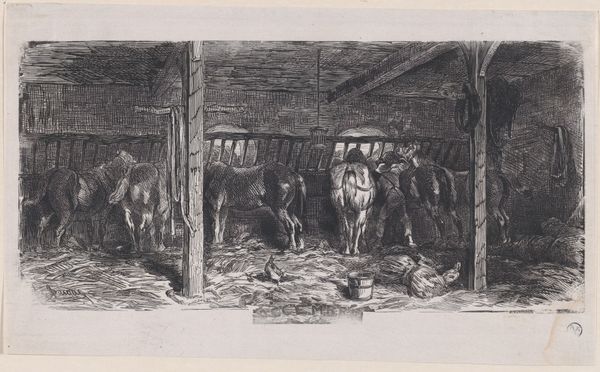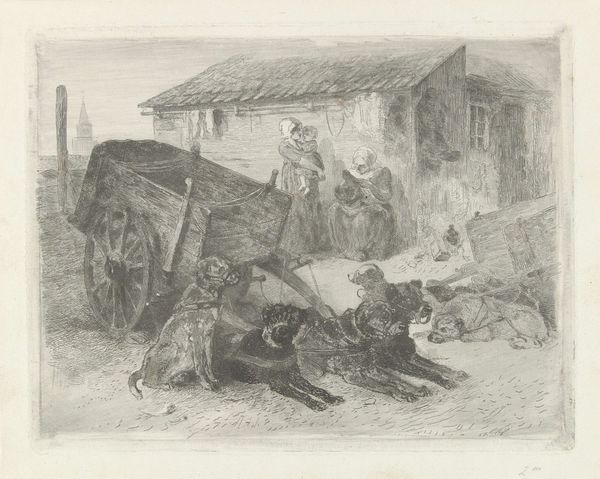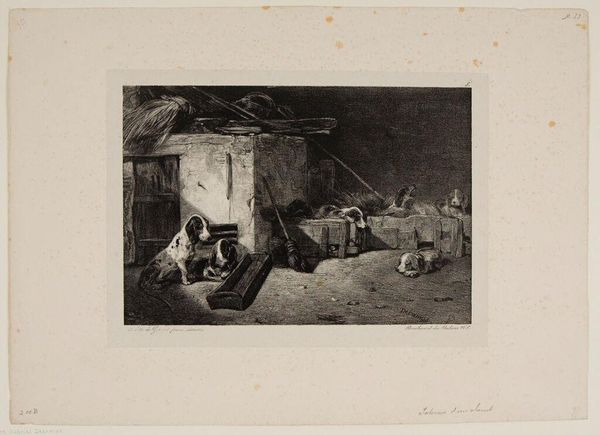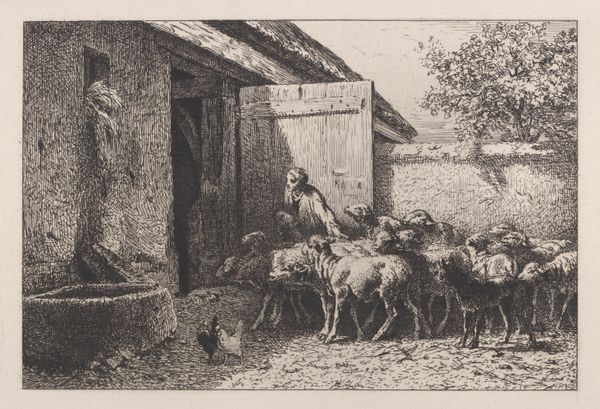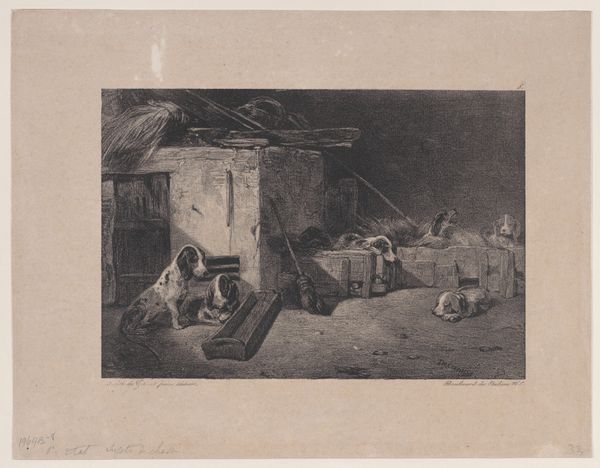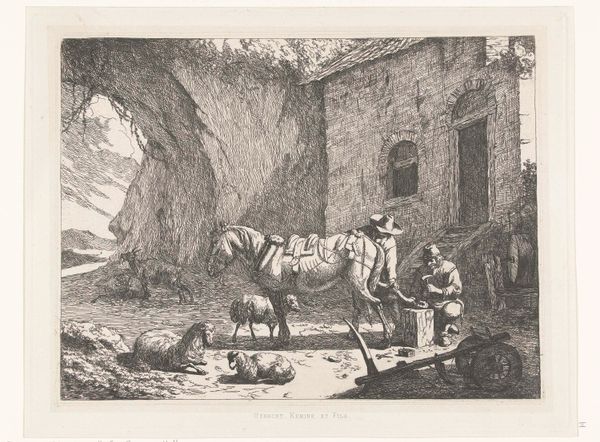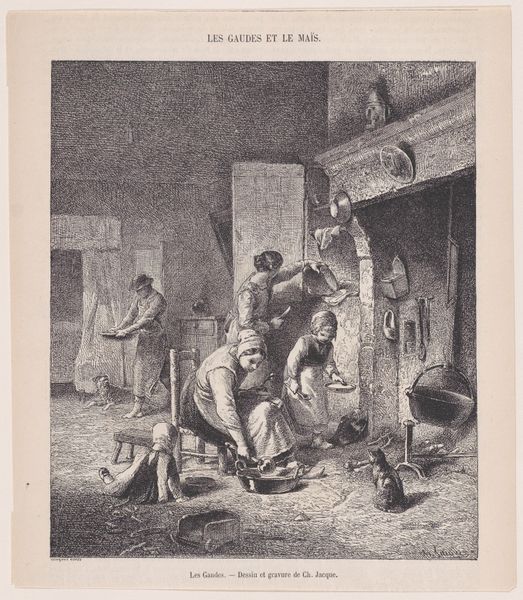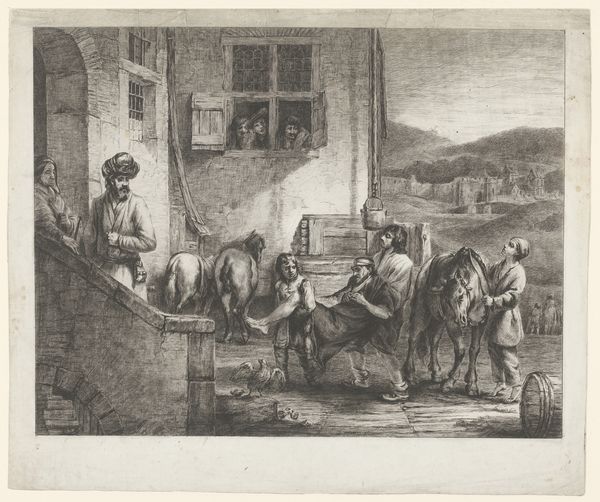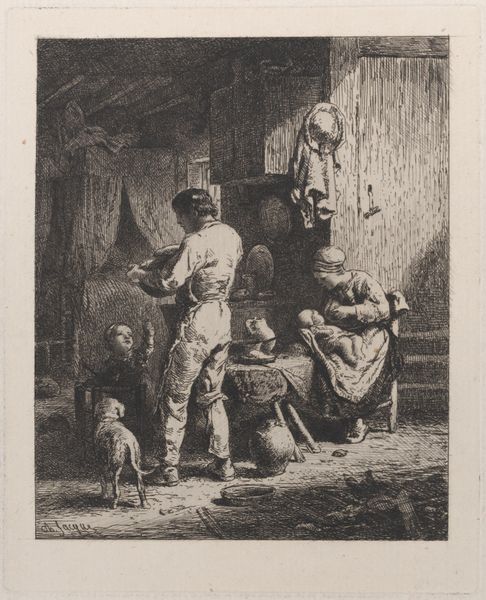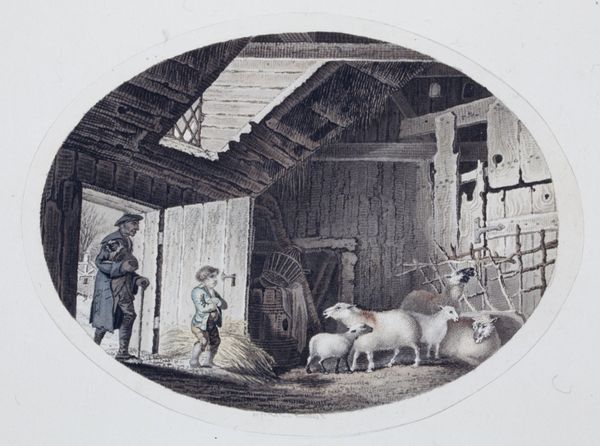
drawing, print, woodcut
#
drawing
# print
#
landscape
#
woodcut
#
genre-painting
#
realism
Dimensions: Sheet (Trimmed): 4 5/8 × 6 15/16 in. (11.7 × 17.7 cm) Image: 3 7/8 × 5 15/16 in. (9.8 × 15.1 cm)
Copyright: Public Domain
Editor: This is "A Stable, from "Le Magasin Pittoresque,"" created between 1848 and 1864 by Charles Jacque. It's a drawing and print, a woodcut showing the interior of a stable. There's a really strong sense of labor and rural life in this image. What do you see when you look at it? Curator: I see a very deliberate commentary on labor and class. This piece isn't just a quaint depiction of rural life. Consider the date; it’s situated within a period of massive social upheaval and growing class consciousness. Jacque, through realism, offers a view into the lives of those often marginalized, elevating their status through representation. Who are the subjects and who is looking? Editor: So, you’re saying it’s more than just a snapshot – it's a statement? Is the positioning of the worker in the stable intentional? Curator: Absolutely. The stable becomes a microcosm of society. Notice the confined space, the dim lighting. How might that relate to the socio-economic constraints placed on the working class during that time? Does this prompt any contemporary parallels? Editor: I never really thought of it that way. I guess I assumed genre scenes were just, well, scenes. It’s really powerful to consider the social and political context and apply critical theory. Curator: Precisely! And that's the beauty of art history. It allows us to see beyond the surface, engage in dialogues across time, and unpack narratives of power, identity, and resilience. How does that change your initial impression of the work? Editor: It makes me appreciate it a lot more. I now understand how Jacque encourages us to question the lived reality represented and recognize it as so much more. It's not passive but proactive. Curator: Indeed. A potent reminder that art can be a catalyst for social change, prompting vital conversations that bridge the past and present.
Comments
No comments
Be the first to comment and join the conversation on the ultimate creative platform.
